I am writing a physics engine/simulator which incorporates 3D space flight, planetary/stellar gravitation, ship thrust and relativistic effects. So far, it is going very well, however, one thing that I need help with is the math of the collision detection algorithm.
The iterative simulation of movement that I am using is basically as follows:
(Note: 3D Vectors are ALL CAPS.)
For each obj
obj.ACC = Sum(all acceleration influences)
obj.POS = obj.POS + (obj.VEL * dT) + (obj.ACC * dT^2)/2 (*EQ.2*)
obj.VEL = obj.VEL + (obj.ACC * dT)
Next
Where:
obj.ACC is the acceleration vector of the object
obj.POS is the position or location vector of the object
obj.VEL is the velocity vector of the object
obj.Radius is the radius (scalar) of the object
dT is the time delta or increment
What I basically need to do is to find some efficient formula that derives from (EQ.2) above for two objects (obj1, obj2) and tell if they ever collide, and if so, at what time. I need the exact time both so that I can determine if it is in this particular time increment (because acceleration will be different at different time increments) and also so that I can locate the exact position (which I know how to do, given the time)
For this engine, I am modelling all objects as spheres, all this formula/algorithm needs to do is to figure out at what points:
(obj1.POS - obj2.POS).Distance = (obj1.Radius + obj2.Radius)
where .Distance is a positive scalar value. (You can also square both sides if this is easier, to avoid the square root function implicit in the .Distance calculation).
(yes, I am aware of many, many other collision detection questions, however, their solutions all seem to be very particular to their engine and assumptions, and none appear to match my conditions: 3D, spheres, and acceleration applied within the simulation increments. Let me know if I am wrong.)
Some Clarifications:
1) It is not sufficient for me to check for Intersection of the two spheres before and after the time increment. In many cases their velocities and position changes will far exceed their radii.
2) RE: efficiency, I do not need help (at this point anyway) with respect to determine likely candidates for collisions, I think that I have that covered.
Another clarification, which seems to be coming up a lot:
3) My equation (EQ.2) of incremental movement is a quadratic equation that applies both Velocity and Acceleration:
obj.POS = obj.POS + (obj.VEL * dT) + (obj.ACC * dT^2)/2
In the physics engines that I have seen, (and certainly every game engine that I ever heard of) only linear equations of incremental movement that apply only Velocity:
obj.POS = obj.POS + (obj.VEL * dT)
This is why I cannot use the commonly published solutions for collision detection found on StackOverflow, on Wikipedia and all over the Web, such as finding the intersection/closest approach of two line segments. My simulation deals with variable accelerations that are fundamental to the results, so what I need is the intersection/closest approach of two parabolic segments.
